Overview
Let’s talk about how to supercharge your sales enablement process! Here are five best practices that can really make a difference:
- Clear objectives
- Collaboration between sales and marketing
- Targeted content
- Ongoing training
- Measuring effectiveness
Sounds simple, right? But these practices are crucial because they help align your sales efforts with your business goals.
Think about it—when sales and marketing teams work together, they create a synergy that drives success. Plus, having the right content at the right time for buyers at different stages of their journey is a game changer. And we all know that continuous skill development is key in this fast-paced world.
Don’t forget about the power of data! By measuring effectiveness, you can gain insights that optimize your sales strategies. This approach not only boosts revenue growth but also enhances customer satisfaction. So, are you ready to implement these practices and see the impact they can have? Let’s get started!
Introduction
In a world where sales teams are constantly juggling the pressures of changing customer demands, the effectiveness of a sales enablement process can truly make or break an organization’s success. Imagine being able to implement best practices that not only align with your business goals but also foster collaboration and provide targeted content. Sounds great, right? By doing so, companies can significantly boost their sales performance.
But here’s the challenge: how can organizations ensure that their sales enablement strategies resonate with their teams and drive real, measurable results? Let’s explore this critical question together and uncover a roadmap to optimizing sales enablement for sustainable growth.
Define Clear Objectives and Align with Business Goals
To truly empower revenue teams, organizations need to kick things off by defining clear objectives that align with their overall business goals. Think about it: this process begins with identifying key performance indicators (KPIs) that reflect the outcomes we want, like boosting revenue, enhancing customer satisfaction, or growing market share. For instance, a manufacturing company might set a goal to ramp up online revenue by 20% within a year.
As Edwin Korver puts it, "Strategy outlines the specific initiatives, approaches, and resources that will be employed to fulfill the mission and bridge the gap toward the envisioned future." By setting these goals, we can tailor revenue support initiatives to meet specific targets, ensuring that resources are allocated efficiently and effectively.
But here's the kicker: regularly reviewing and tweaking these objectives based on market conditions and performance data is crucial for staying aligned and driving continuous improvement. Established sales targets not only guide the sales team but also play a significant role in revenue growth in manufacturing. They create a focused approach to achieving business objectives. For example, a company that successfully aligned its revenue targets with its business goals saw a 15% increase in income within just six months.
However, organizations need to watch out for common pitfalls, like setting overly ambitious goals that might demotivate the sales force. By fostering an environment of realistic goal-setting and ongoing feedback, we can enhance our enablement processes. So, how can your organization start this journey today?
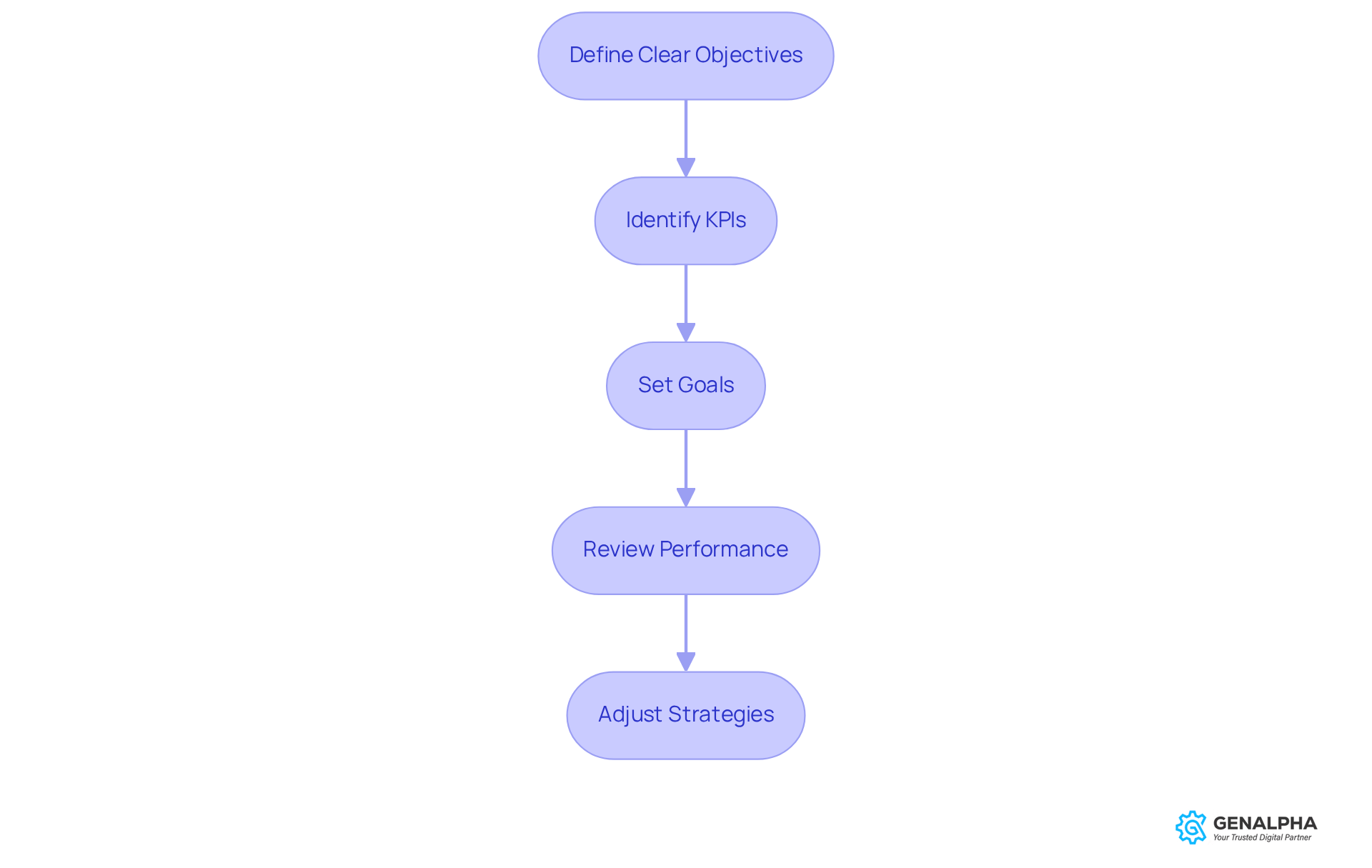
Foster Collaboration Between Sales and Marketing Teams
Sales and marketing teams really need to work together in the sales enablement process to create a smooth experience for clients. How can they do this? By having regular meetings, setting shared goals, and using integrated communication tools. For example, marketing can share insights about client behavior and preferences, which helps sales teams tailor their pitches just right.
Additionally, when both teams collaborate on producing marketing materials—like case studies and product demos—they ensure that everyone is on the same page and that the messaging stays consistent. This kind of alignment not only enhances the client experience but also strengthens the sales enablement process, thereby increasing the chances of closing deals. After all, prospects appreciate receiving clear and relevant information throughout their buying journey. So, let’s get those teams talking and working together for better results!
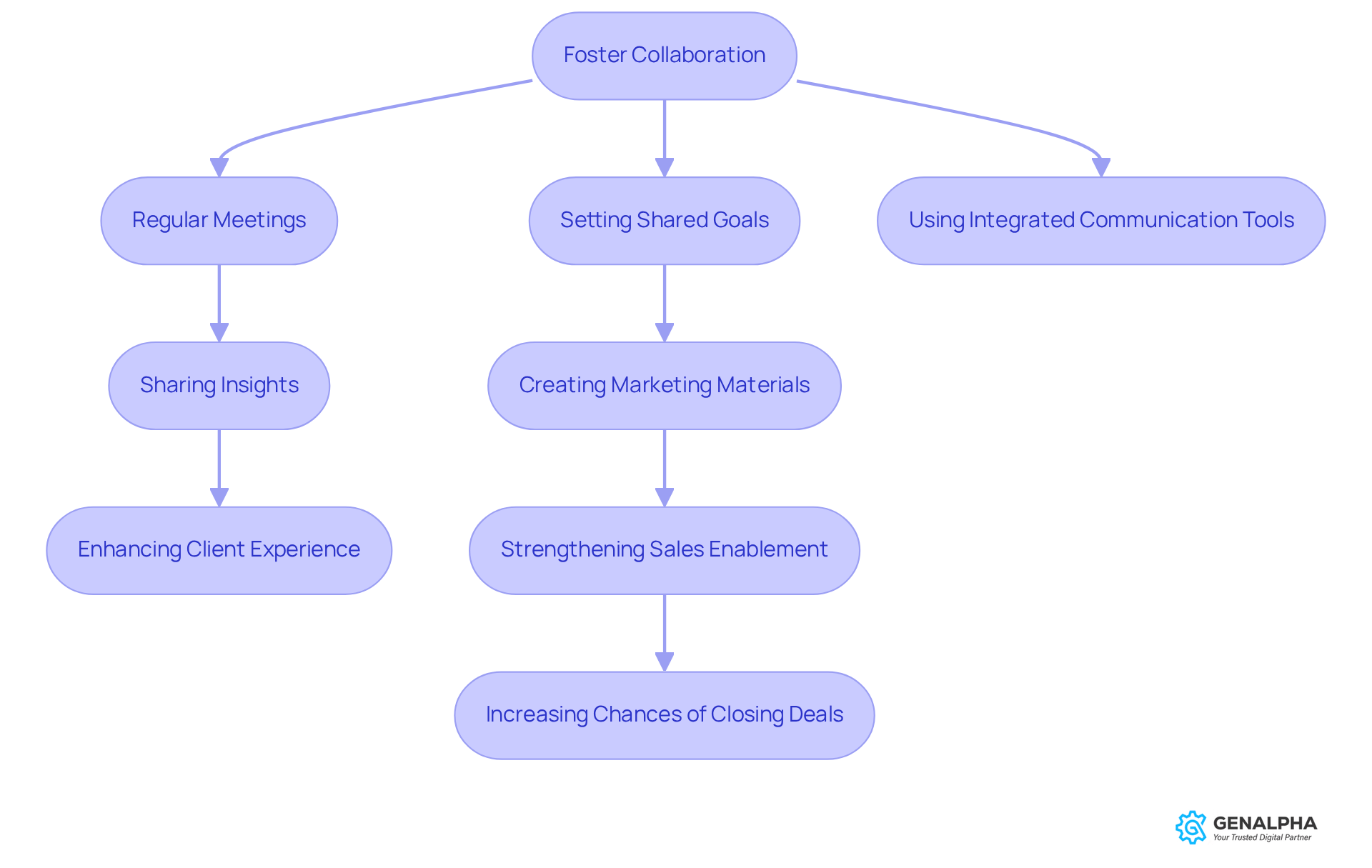
Develop Targeted Content for the Buyer Journey
To effectively assist sales groups, organizations need to create content that resonates with the different stages of the buyer journey: awareness, consideration, and decision. Think about it—during the awareness stage, educational resources like blog posts and whitepapers are key. They help potential customers pinpoint their challenges and explore viable solutions.
Now, when we move into the consideration phase, it’s all about detailed product comparisons, case studies, and cost calculators. These tools empower buyers to evaluate their options thoroughly, addressing common concerns and enhancing transparency in pricing. Did you know that buyers consume 47% more content during this stage than at any other point in their journey? This really highlights the importance of providing comprehensive information.
Interestingly, purchasers are usually 57% into their decision-making journey before they even reach out to a representative. This points to the necessity for proactive content strategies. Finally, in the decision stage, leveraging testimonials and clear calls to action can significantly influence the final purchase decision, providing the reassurance buyers seek.
It’s crucial to avoid being overly promotional during the consideration phase; instead, organizations should focus on delivering educational material that meets buyer needs. By tailoring content for each phase of the journey, organizations can effectively guide prospects through the funnel as part of the sales enablement process, which leads to enhanced engagement and increased conversion rates. This strategic approach not only improves the buyer experience but also positions brands as trusted advisors, ultimately driving growth in the competitive equipment manufacturing sector. So, how are you customizing your content for each stage of the buyer journey?
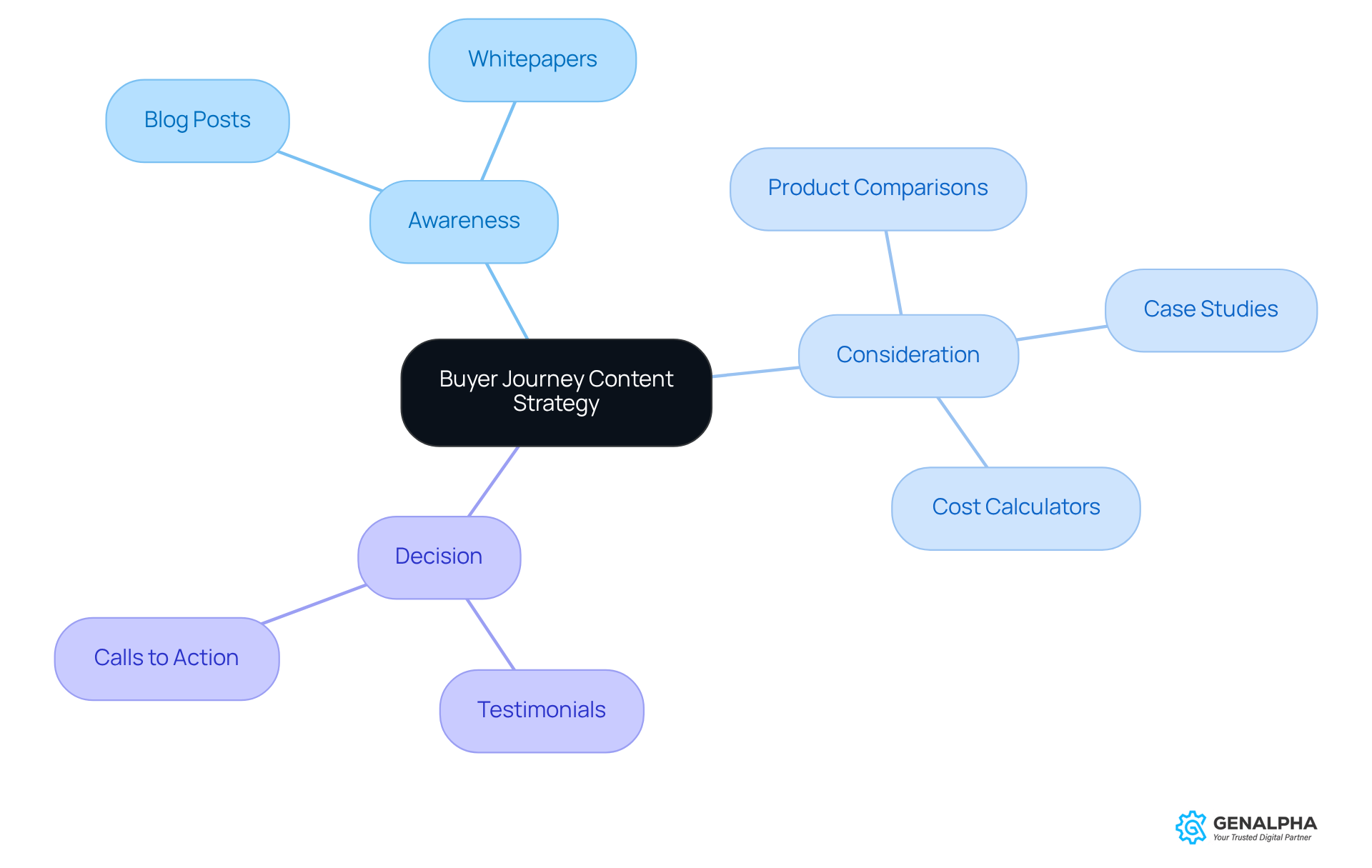
Implement Ongoing Training and Coaching for Sales Teams
Sales support is all about commitment, right? It’s a continuous journey that requires ongoing training and coaching as part of the sales enablement process to keep our teams sharp and knowledgeable. Organizations should definitely consider setting up regular training sessions that enhance the sales enablement process by diving into product updates, industry trends, and effective selling techniques. And let’s not forget about customized individual coaching—it’s a game changer! It gives personalized feedback and support, helping representatives polish their skills.
For example, role-playing activities can mimic real-world scenarios, allowing teams to practice their pitches and receive constructive feedback. By creating a culture of continuous learning, organizations empower their salesforces to adapt to changing customer needs and market trends, thereby strengthening the sales enablement process and boosting performance metrics in the manufacturing sector.
As Russell Simmons wisely noted, focusing on helping others make money is key. This really highlights the importance of a customer-centric approach in our training efforts. Additionally, integrating motivational elements, as seen in various case studies, can significantly uplift teams' morale and productivity.
Building trust is another crucial aspect, as Mike Puglia emphasizes. It’s all about nurturing strong relationships with customers. By avoiding common pitfalls in commercial training and sharing relatable stories, companies can create a more engaging and effective training environment.
So, how can we implement these strategies in our own teams to drive success?
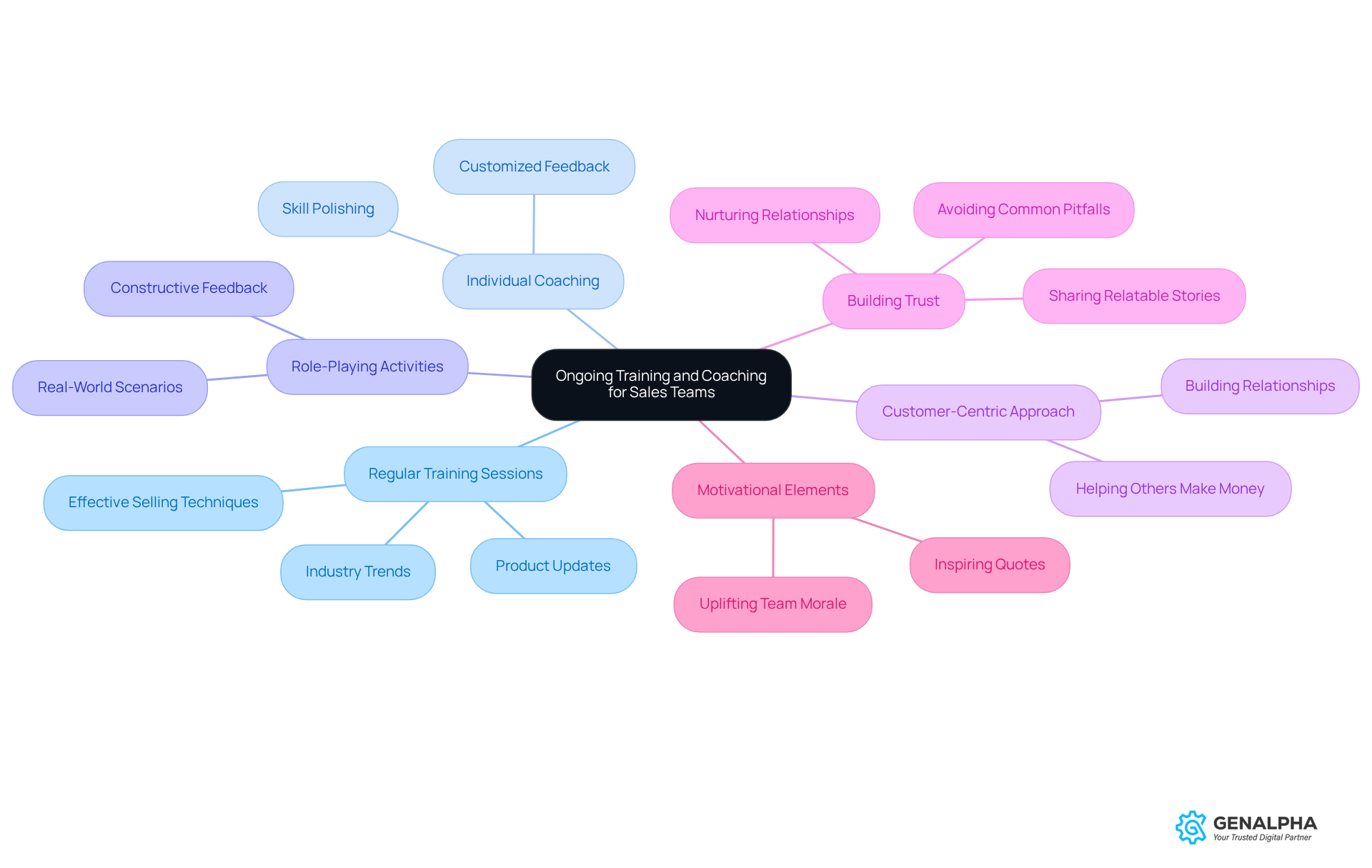
Measure and Optimize Sales Enablement Effectiveness
To make sure that our sales support initiatives are actually hitting the mark, it’s crucial for companies to set up metrics that measure effectiveness. Think about key performance indicators (KPIs) like:
- Sales conversion rates
- Average deal size
- Client feedback scores
These can provide us with valuable insights into the effectiveness of our sales enablement process. By regularly checking in on this data, we can spot trends, assess how effective our training programs are, and make smart adjustments to our strategies.
For example, if we find that a specific piece of content isn’t resonating with customers, it might be time to revise or even replace it. By taking a data-driven approach to sales enablement, we can keep fine-tuning our processes and boost our overall sales performance. So, let’s stay proactive and make those adjustments that lead to success!
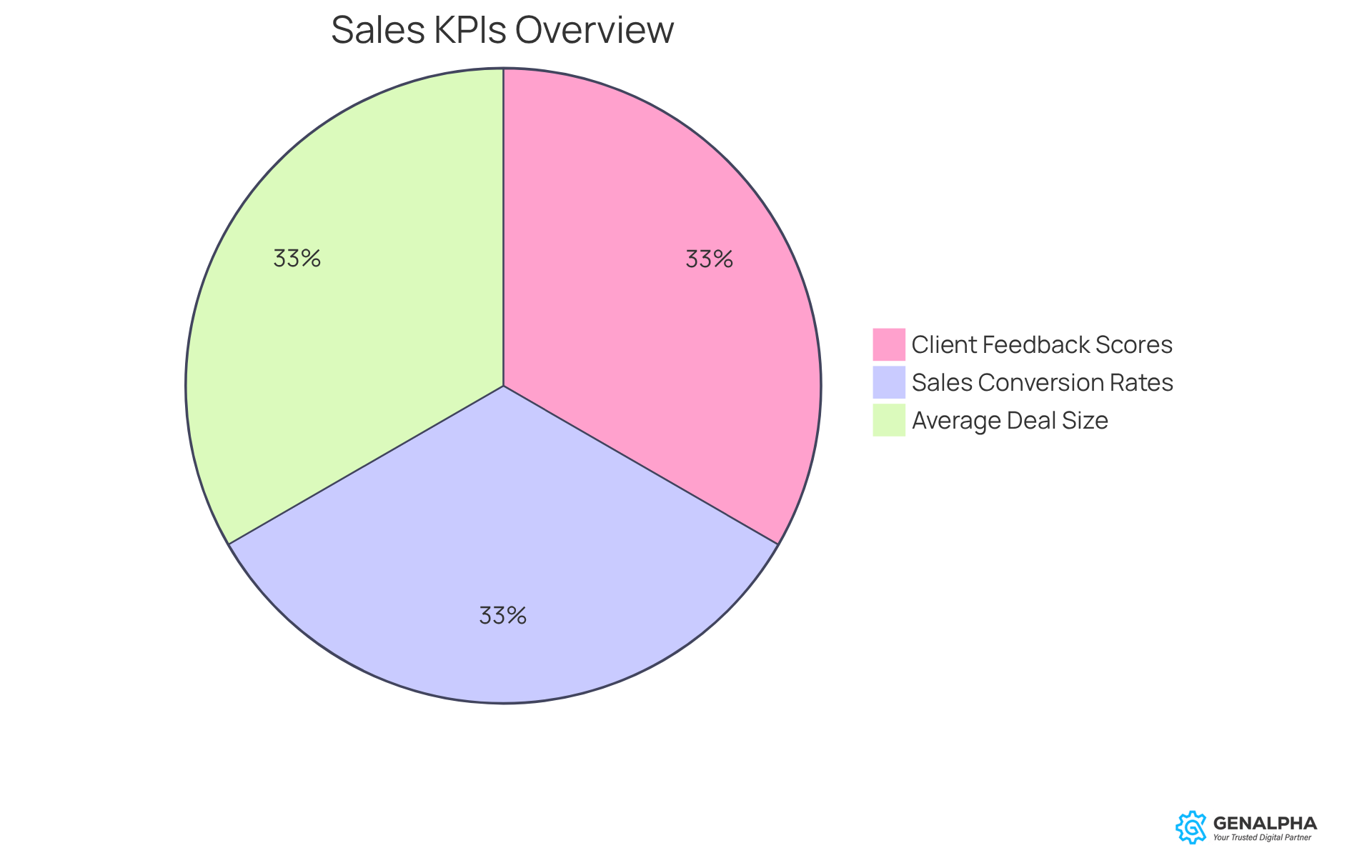
Conclusion
Establishing an effective sales enablement process is crucial for organizations looking to empower their revenue teams and drive business success. By defining clear objectives that align with broader business goals, encouraging collaboration between sales and marketing, developing targeted content for the buyer journey, implementing ongoing training, and measuring effectiveness, companies can create a solid framework that boosts sales performance and enhances customer satisfaction.
Throughout this article, we’ve highlighted some key strategies. For instance, setting realistic goals is important, as is fostering teamwork between sales and marketing departments. Tailoring content to meet the diverse needs of buyers at different stages of their journey is another essential aspect. Plus, ongoing training and coaching are vital components that help sales teams adapt and thrive in today’s competitive landscape. Regularly measuring and optimizing these initiatives ensures that organizations stay agile and responsive to market changes.
So, why does all of this matter? The significance of a well-structured sales enablement process cannot be overstated. By committing to these best practices, organizations not only boost their sales capabilities but also build lasting relationships with customers. Embracing these strategies positions businesses for sustainable growth and success. Let’s take actionable steps towards refining the sales enablement process today—because your success is just a conversation away!
Frequently Asked Questions
Why is it important to define clear objectives for revenue teams?
Defining clear objectives helps align revenue teams with overall business goals and ensures that resources are allocated efficiently to meet specific targets, such as boosting revenue or enhancing customer satisfaction.
What are key performance indicators (KPIs)?
KPIs are measurable values that reflect the outcomes organizations want to achieve, such as increasing revenue, improving customer satisfaction, or growing market share.
How can organizations ensure their objectives remain relevant?
Organizations should regularly review and adjust their objectives based on market conditions and performance data to stay aligned and drive continuous improvement.
What role do established sales targets play in revenue growth?
Established sales targets guide the sales team and create a focused approach to achieving business objectives, which can lead to significant revenue increases.
What are some common pitfalls in setting objectives for sales teams?
Common pitfalls include setting overly ambitious goals that may demotivate the sales force. It's important to foster a realistic goal-setting environment with ongoing feedback.
How can sales and marketing teams collaborate effectively?
Sales and marketing teams can collaborate by having regular meetings, setting shared goals, and using integrated communication tools to enhance the client experience and ensure consistent messaging.
What benefits arise from collaboration between sales and marketing?
Collaboration enhances the client experience, strengthens the sales enablement process, and increases the chances of closing deals by providing clear and relevant information to prospects.




